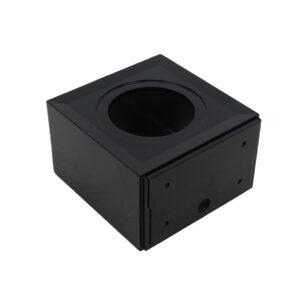The material of sand casting aluminum is simple, easy to obtain and cheap, and it is suitable for the production of components of various sizes and complex shapes, as well as mass production.
The mold of sand casting aluminum is composed of outer sand mold and core, and a layer of powder materials and adhesives with high fire resistance and good high-temperature chemical stability will be coated on the surface of the sand mold and core so as to improve the surface quality of sand casting aluminum.
The most important of the sand casting aluminum process is the selection of pouring position and parting surface, as well as the determination of process parameters. The process parameters include casting shrinkage, machining allowance, mold starting inclination, casting fillet, core head, and minimum casting hole and groove.
Sand casting aluminum also has some limitations. Porosity defect is the main defect of sand casting aluminum under the current technical conditions. Its existence will affect the overall quality of sand casting aluminum parts. The existence of pores will not only affect the strength of aluminum sand castings but also produce stress concentration, which is one of the fundamental reasons for the fracture of sand casting aluminum parts. Due to the sand casting mold being soft and porous, the dimensional accuracy of sand casting aluminum parts is not high, and the surface will be rough. Sand casting aluminum mold is a disposable mold, so the production efficiency is low. Therefore, when selecting the casting process, we must consider the service environment and physical properties of the casting parts and choose the process with high-cost performance.




